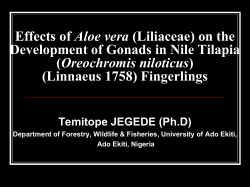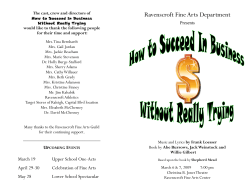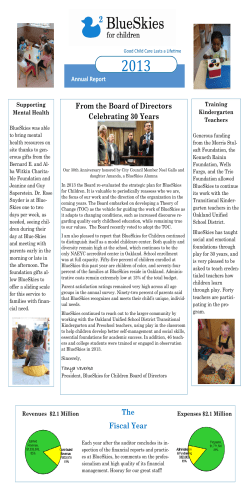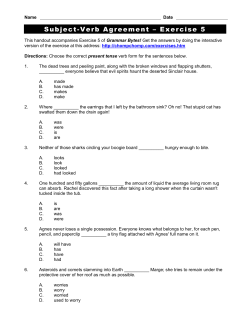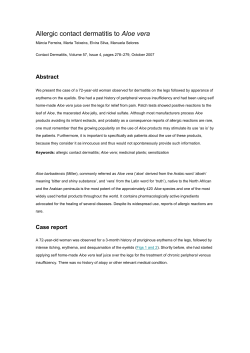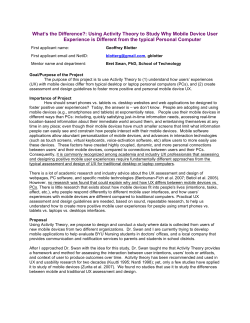
What is Arya Samaj?
What is Arya Samaj? Arya Samaj, founded by Maharshi Dayanand Saraswati, is an institution based on the Vedas for the welfare of universe. It propagates universal doctrines of humanity. It is neither a religion nor a sect. YEAR 34 3/2010-11 MONTHLY BULLETTIN SEPTEEMBER 2010 Special Havan To bless the students Going to University Sunday 5th September Starts 11 am Vedic Vivah Mela (Matrimonial Get Together) Saturdy 9th October 2010 ARYA SAMAJ (Vedic Mission) WEST MIDLANDS (CHARITY REGISTRATION No. 506019) VEDIC CULTURAL AND SPIRITUAL CENTRE ERSKINE STREET NECHELLS, BIRMINGHAM B7 4SA TEL: 0121 359 7727 E-mail- [email protected] Website: www.arya-samaj.org CONTENTS Hinduism does not permit Cast system Mr J.G. Arora 3 संयास धम आचाय डॉ उमेश यादव 6 Pillars Of Arya Samaj (Swami Shraddhanand) Aloe Vera Sri Krishan Chopra 8 Health Corner 10 Matrimonial List 13 Mantra Shri Krishan Chopra 24 Secretary’s Corner Mrs Minu Agarwal 26 The Golden Swan Children Corner 27 Patanjali Yoga Flyer 29 Inner Sciences: Can We Prove Them? Dr Harish Chandra 30 Vivah Mela Information 33 News(पारवारक समाचार) 34 For General and Matrimonial Enquiries Please Ring Mr Nagin Bhai Chauhan (Office Manager) Office Hours Monday to Friday :- 2pm to 6pm, Except Wednesday :- 9.30am to 1.30pm Tel. 0121 359 7727 E-mail- [email protected] Website: www.arya-samaj.org 2 Hinduism does not permit caste system By J. G. Arora, Organiser Weekly There is a misconception in some minds that Hindu scriptures sanction the caste system. But being based on Vedas, Hinduism does not permit any caste system, whatsoever. Vedas, the proud possession of mankind, are the foundation of Hinduism. Vedas are all-embracing, and treat the entire humanity with the same respect and dignity. Vedas speak of nobility of entire humanity (krinvanto vishvam aryam), and do not sanction any caste system or birth based caste system. Mantra number 10-13-1 of Rig Veda addresses entire humanity as divine children (Shrunvantu vishve amrutsya putraha). Innumerable Mantras of Vedas emphasize one-ness, universal brotherhood, harmony, happiness, affection, unity and commonality of entire humanity. A few illustrations are given here. Vide Mantra number 5-60-5 of Rig Veda, the Divine Poet declares, "All men are brothers; no one is big, no one is small. All are equal". Mantra number 16.15 of Yajur Veda reiterates that all men are brothers; no one is superior or inferior." Mantra number 10-191-2 of Rig Veda calls upon humanity to be united and to have common speech and common minds". Mantra number 3-30-1 of Atharva Veda enjoins upon all humans to be affectionate and to love one another as the cow loves her newly born calf. Underlining unity and harmony still further, Mantra number 3-30-6 of Atharva Veda commands humankind to dine together, and be as firmly united as the spokes attached to the hub of chariot wheel. Bhagvad Gita, the essence of Vedas and Upanishads, has many Shlokas that echo the Vedic doctrine of one-ness of humanity. In Sholka number V (29), the Lord declares that He is the friend of all creatures ('Suhridam Sarva Bhutanam') whereas Sholka number IX (29) reiterates that the Lord has the same affection for all creatures, and whosoever remembers the Lord, resides in the Lord, and the Lord resides in him. Sholka number XVIII (61) declares that God resides in every heart (Ishwar sarva bhutanam hrudyeshe Arjun tishthti). 3 Guna (aptitude) and Karma (actions) Hindu scriptures speak about 'Varna' which means to 'select' (one's profession etc.); and which is not caste; and which is not birth-based. As per Sholka number IV (13) of Bhagvad Gita, depending upon a person's Guna (aptitude) and Karma (actions), there are four Varnas. As per this Sholka, a person's Varna is determined by his Guna and Karma, and not by his birth. Chapter XIV of Bhagvad Gita specifies three Gunas viz. Satva (purity), Rajas (passion and attachment) and Tamas (ignorance). These three Gunas are present in every human in different proportions, and determine the Varna of every person. Accordingly, depending on one's Guna and Karma, every individual is free to select his own Varna. Consequently, if their Gunas and Karmas are different, even members of the same family will belong to different Varnas. Nevertheless, notwithstanding the differences in Guna and Karma of different individuals, Vedas treat the entire humanity with the same respect; and do not sanction any caste system or birth based caste system. Veda is the foundation Hinduism is all-embracing, and gives the same respect to all humans, and anything to the contrary in Manu Smriti or anywhere else is not sanctioned by the Vedas. Being divine revelation, Shrutis (Vedas) are the ultimate authority for Dharma, and represent its eternal principles whereas being human recapitulations, Smritis (Recollections) can play only a subordinate role. As per Shloka number (6) of chapter 2 of Manu Smriti, "Vedo akhilo dharma mulam" (Veda is the foundation of entire Dharma) whereas Shloka number 2(13) of Manu Smriti specifies that whenever Shruti (Vedas) and Smritis differ, stipulation of Vedas will prevail over Smriti stipulation. In view of this position, anything discriminatory in Manu Smriti or anywhere else is anti-Veda, and therefore, is not sanctioned by Hinduism, and has been subsequently inserted by unholy intentions, and deserves to be weeded out. Role of media In order to usher in a casteless and harmonious society, all-embracing 4 and universal message of Vedas has to be followed and spread. Both the print and electronic media play an important role in a country's life. They should contribute their mite to unite various sections of society. But in India, most of the media are unwittingly strengthening caste and communal divisions. By publishing divisive articles and describing political leaders and electorate, achievers and sports persons, and even wrong doers and their victims as members of this caste or community, the media are strengthening divisions instead of unifying society. Media should play a positive role so that there is amity all around. "Let your hearts be one" Any one believing in caste system is violating Vedic command of oneness of entire humanity. Though the first known poem in the world appeared as the first Mantra of Rig Veda, and though Vedas and Upanishads contain the sublimest thoughts in the sublimest language, because of a faulty education system, most of the educated Indians are ignorant of their rich heritage contained in Vedas and Upanishads. Most of the Indians do not know Sanskrit, the language of Vedic literature. Quite a few persons do not know even the meaning of their Sanskrit names. Though learning Sanskrit is quite easy, one can also go through the translated Vedic literature in order to understand and appreciate the precious Vedic heritage. We have to ensure that we do not lose our rich Vedic heritage. Losing our Vedic heritage would mean losing our identity. To ensure the survival of our Vedic heritage, and to bring about unity and harmony in society, it is imperative that all-embracing message of Vedas is practised and propagated. With the fond hope that every one will do the utmost in this regard, I conclude this write-up with the last Mantra of Rig Veda emphasizing the unity and harmony of entire humanity, "Samani vha aakutihi, samana hrudyani vha, samanam astu vo mano, yatha vha su saha asti." ("Let your aims be one, let your hearts be one, let your minds be one, and let your unity go from strength to strength"). 5 संयास धम-भागभाग-5 --आचाय --आचाय डॉ. डॉ. उमेश यादव धम क बात कर तो धम तो सब मनुंयमाऽ का एक ह' है )क सब अपने जीवन म प-पातर)हत यायाचरण, स0य का महण, अस0य का पर0याग, वेदो2 ई4र'य आ5ा का पालन, परोपकार, स0यभाषणा)द ल-ण बनाकर रख। यह' सभी आौम; के लोग; का समान धम है पर संयासी का )फर भी =वशेष धम है >जनका )द?दशन मनुःमृित-अ.6/Eो.46 व 48 के इन Eोक; म ःपIJप से )कया गया है । K=Iपूतं यसे0पादं , वMपूतं जलं =पवेत।् स0यपूतां वदे Oाचं, मन:पूतं समाचरे त।। ् बुRयतं न ूितबुRयेदाबुI:कुशलं वदे त।् सTOारावकणा च न वाचमनृतां वदे त।। ् दे खकर चलना, छानकर जल पीना, स0य बोलना, मन से =वचार कर स0य का महण और अस0य का छोड़ना संयासी का आचरण है । ऐसा इसिलये )क मागावलोकन संयासी का परम धम है । दे खकर चलना व छानकर जल पीना तो उपल-ण है । इससे यह ःपI होता है )क संयासी चलने-)फरने, माग-पर'-ण तथा खाने-पीने म सदै व सावधान रहता है । जब ःवयं सह' माग का 5ान होगा तभी दसर; को माग )दखा पायेगा। खाना-पीना सब शुZ व ःवाः[यवधक हो, यह ू Rयान दे ने यो?य बात है । कहा गया है - ''आहारशुZौ स0वशु=Z:'' =वचार; क शुZता आहार अथात ् खाने-पीने क वःतु पर आधारत है )क आप )कस ूकार का खाना-पीना लेते ह^ । इसी तरह स0य वाणी और प=वऽ मनयु2 _यवहार ह' जीवन के उ`च आदशa के िलये आधारशीला है । अपने जीवन म संयासी इन बात; का =वशेष Rयान रखते ह^ । स`चा संयासी ःवभाव म नॆ और शालीन होता है फलत: बोधी को भी cयार व मधुरता से उपदे श दे ता है । 5ाने>िय; के सात; खुले Oार को सदा संःकारत रखना और इह वाणी आ)द _यवहार; म संयिमत रखना संयासी का परम धम है । दो आँख, दो कान, दो नाक व एक 6 मुख ये सात Oार 5ाने>िय; के ह^ । ये शुZ और ःवःथ ह; तभी संसार म पूण =वजय ूाT करना सfभव है । आँख; का संःकारत व शुZ न होना वासनाओं को जम दे ना है । िनदा-चुगली आ)द गलत शhद; को सुनकर बुराइय; से ूभा=वत होना कान; का दोष है । नाक-िछि; से ूाण-श=2 का महण तथा याण-श=2 से ूद=षत वतावरण को जानकर उससे पृथक् हो सुग>धत वातावरण म रहना यो?य ू है तथा मुख का ूयोग सOाणी के _यवहार; म लगाना है । इस ूकार आ0म=वकास और जगोपकार एक संयासी का मुjय धम है । अत एव आगे भी कहा है ---मनु. अ.6/Eो.49व60 अRया0मरितरासीनो िनरपे-ो िनरािमष:। आ0मनैव सहायेन, सुखाथm =वचरे )दह।। इ>ियाणां िनरोधेन रागOे ष-येन च। अ)हं सया च भूतानां अमृ0वाय कnपते।। उपरो2 Eोक; के आधार पर संयासी के गुण-धम इस ूकार बताये-* '' अRया0मशील िनरपे- अथात ् अपे-ार)हत अपने-पराये के मोह से ऊपर मांसभ-णर)हत हो आ0मा क ह' सहायता से सुखाथm होकर इस संसार म धमqपदे शपूवक =वचरता रहे ।'' * ''इ>िय; को अधमाचरण से पृथक् रख राग-Oे ष दोष; से बाहर रहकर अ)हं सा अथात ् वैरर)हत हो समःत ूा>णय; के साथ _यवहार कर ( अमृ0वाय) मो-साधना हे तु ूयt करता रहे ।'' उपरो2 समःत आचरण एक संयासी मनुंय को मानव जीवन क पूण सफलता क ओर सदै व बढ़ते रहने म मदद करते ह^ । धमqपदे श संयासी का िनजी कv_य है और मो--ूािT उसका अिधकार। अत: एक स`चा संयासी िन>wतJप से िनxापूवक कv_यपूित के साथ मो--सुख ूाT कर लेता है । इसीिलये वह जीवन के अंितम -ण तक भी जगोपकार जैसे परम कv_य को कभी नह'ं भूलता व>nक इस उyे ँय क पूित म ह' अपने जीवन क इित ौी समझता है और तदनुकूल )दशा म सदै व ूयtशील रहता है । हम भी इससे ूेरणा लेनी चा)हये। 7 Swami Shraddhanand Sermon from the pulpit of Jama Masjid Dehi In those days both Hindus and Muslim communities had faith in him and had considered him as their revered leader. On 4th April 1919, the Muslim leaders with great gratitude took him to Jama Masjid Delhi. It was Friday and he was requested to deliver sermon from the pulpit. It was a memorable day in the history of India when a nonMuslim, a sanyasi in saffron clothes, delivered the message of love, unity and brotherhood to mankind from the highly prestigious pulpit of Islam. Swami ji started his sermon with the mantra of Rig Veda – tvam hi nah pita vaso --- and finished the sermon by chanting om shantih , shantih , shantih. Massacre of Jallianwala Bagh The residents of Punjab celebrate Baisakhi as the thanks giving festival to God because their fields are full of Gold ,the grains of wheat, for which the land of five rivers is known as the bread basket of India. They celebrate this festival with great enthusiasm as many golden events of history are also attached with this festival. On the Baisakhi day, 13th April 1919, some agents of Government circulated the rumour in public that Congress has organised a meeting in Jallianwala Bagh this afternoon. This open ground is within the city surrounded on three sides with houses and a narrow passage to come and go inside. The crowd of many thousands, among them children and old gathered there around 4.00pm. The English Army Officer Gen. Dyer ordered the soldiers to shoot the crowd of peaceful and unarmed people with machine guns without any warning Many children and old people died due to stampede and the 8 bullet wounds. There was no arrangement to treat the wounded and no hospitalisation. According to government sources two thousands and non government sources around five thousands people died. The next day when this news was published in the national newspapers, Swami Shraddhanand rushed to Amritsar with batch of students from gurukul to treat the wounded and to sympathise with the bereaved. Invitation to attend the Meeting of Congress Working Committee He was sent an invitation by Pandit Moti Lal Nehru, the then president of the Working Committee of Congress to attend the meeting at Allahabad. Actually the congress annual session was to be held at Amritsar per earlier decision but now some congress leaders were reluctant to hold the session at Amritsar because of the fear due to the massacre of Jallianwala Bagh. Swami Ji insisted to stick to the decision of holding the session at Amritsar so the people of Punjab can have relief from the atrocities of British Government and they can feel that the people of the country are with them. He was given the responsibility of the Chairmanship of the Reception Committee for the annual session of All India Congress at Amritsar. The Congress Committee also set up a committee of three people to visit Amrisar and report about the facts of Jallianwala Bagh. This Committee consisted of Pandit Moti Lal Nehru, Pandit Madan Mohan Malviya and Swami Shraddhanand. This report brought out the atrocities and the inhuman treatment of the Government towards the innocent people of Amritsar. Krishan Chopra 9 Aloe Vera Aloe Vera is a plant that looks like a cactus, but is actually a member of the lily family. It grows in Africa, Asia and the warmer parts of America and Europe. The particular kind of Aloe Vera used for natural remedies has the Latin name Aloe barbadensis and its leaves contain a gel that is rich in therapeutic properties. Aloe Vera has been used medicinally for over 6,000 years. The ancient Egyptians used it to heal battle wounds and cure infections. The early Greeks used it for relieving blisters, burns and leg ulcers as well as healing bowel and stomach disorders. Today it is found in health products in the form of gels, juices and creams, and also as an ingredient in some cosmetic products. How it Works Aloe Vera contains 75 known ingredients including: · All the vitamins (except Vitamin D). · Enzymes that aid digestion and reduce inflammation. · The minerals needed for the enzymes to function. · Long-chain sugars that help to re-balance the digestive system. · Saponins, which have an anti-microbial effect against bacteria, viruses, fungi and yeast. · Twenty of the 22 amino acids (including seven out of the eight essential amino acids that can’t be produced by the body). It’s thought that the synergistic effect of these ingredients is what gives Aloe Vera its power. 10 It is only recently that the scientific establishment has started to carry out proper studies of Aloe Vera but the results so far are encouraging. It appears to have anti-inflammatory, antioxidant and restorative properties. In one study it was found to have a beneficial effect in lowering the risk factors among patients with heart disease. Another study, started in 2005 at the University of Strathclyde, is investigating the effects of Aloe Vera against superbugs such as MRSA, after finding that it has the ability to destroy bacteria such as E.coli. The Benefits of Aloe Vera Small-scale studies and anecdotal evidence suggests that Aloe Vera may be beneficial in the following cases: Applied as a cream for: - Healing small cuts, insect stings, grazes and wounds. - Healing and repairing skin tissue after burns, including sunburn. - Healing skin conditions such as eczema, psoriasis, acne, general itching. - Cosmetic uses such as moisturising and improving the elasticity of the skin. Ingested as a gel/juice for: - Digestive conditions such as IBS, peptic ulcers, acid reflux, Chron’s disease, candida etc. - Musculo-skeletal conditions such as arthritis, rheumatism, etc. - Immune-related conditions such as asthma, hay fever and even ME. 11 -Overall protection (as an antioxidant) against free radicals. How to Take Aloe Vera You can grow your own Aloe Vera plant indoors and use it as a quick remedy for minor burns and grazes. Just break off a leaf and apply the gel directly. If you are buying an Aloe Vera product, always purchase those made from 100% pure Aloe Vera. Look out for the International Aloe Science Council Seal of Approval as a guide. Natural fruit flavourings may be added to Aloe Vera drinks to make them more palatable, but avoid those that contain artificial flavours and colourings. Clear juices should be avoided as it means the pulp (containing much of the benefit) has been strained. Also avoid those products that use the whole plant, as the outer leaf contains a latex that has a strong laxative effect. If you experience side-effects, such as diarrhoea, you should reduce your dose and consider switching products. The words ‘gel’ and ‘juice’ are often used interchangeably, so some drinks can be described as gels. If taking Aloe Vera internally you would normally take between 2 fl oz (60ml) and 6 fl oz (180ml) per day depending on the acuteness of your condition. If you start out on a high dose you would expect to reduce to the lower doses by about six weeks. To experience the full benefits of an Aloe Vera product it is often recommended that it is used regularly for a minimum period of three months. [Please note that this does not constitute medical advice. If you suffer from a medical condition you should always seek the advice of a doctor or your chosen practitioner.] 12 To see the Latest Matrimonial list Please go to www.arya-samaj.org For further details Ring 0121 359 7727 Or E-mail [email protected] 13 इ`छ >त दे वाः सुवतं न ःवcनाय ःपृहय>त । य>त ूमादमतिाः।। ऋग वेद 8.2.18 Ichchanti devaah sunvantam na svapnaaya sprihyanti / Yanti pramaadamatandraah // Rig veda 8.2.18 Meaning in Text Order Ichchhanti = favour, devaah= men of divine qualities, sunvantam= diligent, na= not, Svapnaaya= lazy- sluggish, sprihyanti= cherish, yanti =attain, pramaadam= delight- bliss, Atandraah= studious. Meaning The men of divine qualities always favour those who are diligent and never desire those who are lazy and inactive. The hardworking and studious attain delight in their lives. Contemplation Enlighten people cherish hard working people. Diligence is life and laziness means an invitation to miseries. If we keep an eye on our time table and keenly try to spend our time in more effective, positive and constructive way beyond doubt our life will be different than what we are today. A lazy person is a burden for himself. The diligent people are always leaders of the society and these are the people who act for the welfare of the society and society sings their praises. To be ever ready to do their duty is the first priority of theses people. Laziness is our worst enemy within our self. We take many good causes in our hand through the inspiration within ourselves. Due to our laziness we abandon them in the middle 24 because either our resolution power is week or we are too lazy. Enlightened (Devtaa) are those who do good to other without any desire of reward for themselves and such people don’t like lazy people because it is obvious that if they can not care for themselves, how could they care for others? Diligence is a discipline and practise of mind which needs our constant attention. These people have a special mental attitude. They have pure spirit ( saatvik bhaav). The universe as it is displayed in active form is a constant yajna in progress and diligent people are pouring in this yajna their oblations and those who are not diligent, not offering their oblations of hard work, would not receive the reward for that. Those who have earned name and fame in the world, they were hard working people. They burnt midnight oil to reach to their goal. Therefore the words of Upnishad remind us- Utishthit- jaagrit-praapyavraan nibodhyatarise!awake! realise it here and now. Krishan Chopra The only way of finding the limits of the possible is by going beyond them into the impossible. Arthur C. Clarke Chracter isn't something you were born with and can't change, like your fingerprints. It's something you weren't born with and must take responsibility for forming. Give whatever you are doing and whoever you are with the gift of your attention. Jim Rohn 25 ओ3म् I, Minu Agarwal, as the new joint secretary take the job of writing this corner. We have been striving all the time to improve Arya Samaj West Midlands in every way. The building refurbishment has been an ongoing process. The next, first and foremost, essential taskis the improvement of the heating system. Then comes the dream of the last executive to have a separate sanctified space for Havan, a Yajna Shala; a permanent space specially designated for the yajna . We would like to fulfil that dream with the support of our members and well wishers. That is matter for the future however close. I would better come back to present. I am tempted to relate all the activities that are going on in ASWM, but would only speak about the main event that happened in the month of August, the celebration of the Independence Day of India. Perhaps you are all aware that Arya Samaj movement was the greatest contributor to, the Satygrah and the revolutionary fighters like Shaheed Bhagat Singh. As per our tradition celebration started with Havan. After the flag hoisting and National Anthem our learned Acharyaji had his sermon on the words Swaraj and Swatantra. Arya Samaj is proud to say that Maharshi Dayanand was the pioneer to intoduce the words Swaraj and Swadeshi to the consciousness of the people of India. The sermon was followed by the cultural programme. It started with the performance by Our Divya Children Dance group on Gayatri invocation and ended with their dance titled Vande Mataram . In between there was The folk dance of our Arya Mahila group, modern dance by a young lad, empowering song by the Bhajan Mandali and recitations by our local poets. It might sound like blowing my own trumpet but still no harm in saying that it was well organised and all the items were very much appreciated. . In spite of it being a very busy weekend I am pleased to say that the attendance was over 120. I on behalf of our executive committee would look forward to your support in all the future activities of Arya Samaj West Midlands Om Shanti-Shanti-Shanti. 26 THE GOLDEN SWAN This is another nice story from the album of Jataka Kathaye (Tales). Once upon a time, there was a swan / goose that had striking golden feathers. This swan lived in a pond. There was a house near this pond, where a poor woman lived with her two daughters. The people were really poor and were leading a tough life. The swan found that the poor mother was passing a hard time with her daughters. The swan thought, “If I give them one after another my golden feathers, the mother can sell them. She and her daughters can live in comfort with the money raised from it”. After thinking this, the swan flew away to the poor woman’s house. On seeing the swan inside the house, the woman said,” Why have you come here? We have nothing to offer you”. The Swan replied, “I have not come to take anything, but I have something to give you. I know your condition. I will give my golden feathers one by one and you can sell them. With the money raised through it, you people can easily live in comfort”. After saying this, the swan shed one of her feathers and then flew away. This became a regular feature and from time to time, the swan came back and every time left another feather. Like this, the mother and her daughters were happily 27 leading their life by selling the feathers of the golden swan. Each golden feather got them enough money to keep them in comfort. But the mother became greedy to get all the feathers as soon as possible. One day, she said to her daughters, “Now, we will not trust this swan, possibly she may fly away and never come back. If this would happen, we will be poor again. We will take all of her feathers, when she will come the next time”. The innocent daughters replied, “Mother, this will hurt the swan. We will not cause any pain to her”. But the mother was determined to catch hold the swan the very next time she comes. Next time, when the swan came, the mother caught her and pulled out all of her feathers. Now, the golden feathers of the swan changed into some strange feathers. The mother was shocked to see such feathers. The Golden Swan said, “Poor Mother, I wanted to help you, but you wanted to kill me instead. As per my wish, I used to give you the golden feather. Now, I think there is no need to help you. Now, my feathers are nothing more than chicken feathers for you. I am going from this place and will never come back”. The mother felt sorry and apologized for the mistake committed by her. The Golden Swan said, “Never be greedy” and flew away. Moral: Excess greed brings nothing. 28 Science of Yoga: Patanjali Meditation from Wednesday Oct 6, 2010 Weekly classes (ten sessions) on “Science of Yoga: Patanjali Meditation”: Arya Samaj West Midlands, 188 Inkerman Street, Nechells, Birmingham B7 4SA Every Wednesday, 6:30 to 8:00pm from Oct 6, 2010 It's a great opportunity to obtain the wonderful benefits of meditation from a well-designed course, crafted and delivered by Dr Harish Chandra for: Stress-free living Health and wellness of the body Peaceful and relaxed mind Blissful soul ************* Don't Miss It ************* The Instructor: The course is provided by Dr Harish Chandra, PhD – an eminent scholar of ancient Vedic philosophy, who also holds a PhD in Combustion Sciences from Princeton University, USA. Course Fees: £20 (£10 for students/unemployed) for 10 sessions Contact: Mrs Vibha Cale, 07877 302 761, [email protected] ______________________(Tear Here)___________________ Registration Form Name:_____________________________________________ Address:___________________________________________ __________________________________________________ __________________________________________________ Email: Tel: Mob: □ I will pay cash □ I enclose a cheque (payable to Arya Samaj West Midlands) I wish to attend the course Science of Yoga: Patanjali Meditation Signature: 29 Date: Inner Sciences: Can We Prove Them? – Part I The term "inner sciences" pertains to a scientific inquiry when we traverse inward of a subject of interest. If our inquiry pertains to the human beings then we are interested in the innermost core of a human being where resides a tiny infinitesimal soul – the individual spirit. Thus, a scientific inquiry towards the study of our spirit would be the first arm of the inner sciences. In addition to this, the second arm of the inner sciences would relate to a scientific inquiry pertaining to the cosmic spirit that permeates through the infinitely large universe. In other words, our definition of inner sciences includes both the spirits – the tiny individual spirit and the infinite cosmic spirit. Both the spirits possess consciousness as their inherent and intrinsic property. While the first spirit is infinitesimally small – a singularity in our body structure, the cosmic spirit is an infinitely large entity. When we discuss spirituality (study of both the spirits – the tiny one and the infinite one) then the very first question arises: can we discuss and examine spirituality in a well-accepted scientific manner. It is generally assumed that spirituality is a matter of faith and personal belief. This is where the Center for Inner Sciences (CIS) makes a firm point that nobody should accept anything without ascertaining its truthfulness based on a rigorous scientific inquiry. This being the case, we must state at the outset that the so-called inner sciences must be provable. If it cannot be proven then we shouldn't accept it. 30 An ancient sage Kapila discusses the pleasure and pain in his classical treatise Samkhya-Darsana. This is our basic instinct that we get away from what causes pain and then we tend to get towards what is pleasant. Indeed, come to think of it, the ability to feel the pleasure and pain is the proof of our consciousness. However, the discussion here is not whether we are a conscious being or we are void of consciousness. Everybody knows that we are a conscious being – we differ on the seat of consciousness. Is it an attribute of our body or that of the mind. Else, could it be that an entity such as a soul must be thought of that is the ultimate seat of our consciousness. Let us come back to Kapila. He raises a question: what gives us pain and what gives us pleasure. The question sounds simple enough that even a child can list ten things that give her pain and another ten things that give pleasure. But a deeper thought will indicate that it is not easy for all the human beings to concur on a universal source of pain and another universal source of pleasure. Yes, it is not easy to find the universal source of pain or pleasure that every human being has come across in his/her life. Let us first look at a more positive side, namely, the source of pleasure. A cup of coffee may give pleasure to many people. But there are many people who may not derive pleasure from it, or have no idea of its taste, and therefore, they may not say that it gives pleasure to them. Similarly, one may say that it pains when his/her finger comes in contact with a fire. But there are many who may 31 not have experienced such a thing, especially those who are small infants and children. Then Kapila continues further to state his observation that "hunger" is the commonest pain that everyone has suffered. Even an infant child of the richest person, a few moments after birth, has cried out of hunger. Thus, hunger is the universal source of pain every human being has had first hand experience about. Kapila, furthermore, says that the universal source of pleasure, which everybody has experienced in his/her life is deep sleep or sound sleep – what he calls susupti. Try to recall the last time you had deep sleep void of any dream and you were not awakened by an alarm or any other event in the external world. In other words, you emerged out of the deep sleep in a natural manner. Try to recall the very next moment after you emerged from the deep sleep – you definitely felt that "I had a nice sleep" or that "I enjoyed the sleep." Next month we will see how Kapila goes on to make the most powerful statement from such a trivial event of the life, namely the sleep. How he proves the existence of our spirit and that of the cosmic spirit from the observation that "the sound sleep is the only experience every human being has gone through and whenever one goes through that he/she finds it to be a pleasant experience." - Dr. Harish Chandra B. Tech. (IIT Kanpur, India) Ph. D. (Princeton, USA) Email: [email protected] 32 When it comes to Arya Samaj West Midlands Vedic Vivah Mela You're essentially opening yourself up to meeting other singles in a short period of time. Come and find The partner of your choice Vedic Vivah Mela 2010 Saturday 9th October 2010 Open to all the members of Vedic Vivah service To attend please contact Office Manager Mr Naginbhai Chauhan Or Acharyaji Dr Umesh Yadav Tel. 0121-359-7727 33 CONGRATULATIONS ON THEIR WEDDING Naveenta and Devesh. Naveenta is the daughter of Mrs Shama and Dr Narendra Kumar Arya Devesh is the son of Mrs Asha and Dr Avinash Kumar Sainik Kathryn and Rajesh, Son of Mr Ramesh and Mrs Suresh Sethi Seema and Anoop of Turna and Drubhra family. Rup Sagar and Natasha, daughter of Mr Anand and Mrs Mala Bhoojiawan and the cousin of Dr Dev Kumar Bhujiawan (Roshan) Hema and Kavit, son of Mrs and Mr Kamal Khosla on their engagement Mr Krishan and Mrs Surat Nischal for his 70th birthday. Dada-Dadi Mr Pawan and Mrs Neerja Bansal, Mum and Dad Avanish and Ruchi Bansal on the naming ceremony of baby daughter Tanushree. Hiten and Shweta Pokar for the Annaprashan Sanskar for the daughter Ria. Mathew and Dipti for the naming ceremony of the son Jay. (Grandson to Mr and Mrs Krishan Khurana.) Mr Vikram and Mrs Suneeta Rawat for their new home. . Our best wishes to Mrs Vimla Devi Makol for speedy recovery and good health CONDOLENCE TO • Mrs Indu Chopra,Vikram, Simon and Seema for the sudden loss of Sri Prithvi Raj Chopra • Mrs. Vijay Agarwal for the loss of her husband Sri Satya Prakash Agarwal (68) Father of Mr. Rajiv and Sumesh and Brother of Mr. Vinod Agarwal 34 Blessing To Mr Ram Murti for new herbal shop Mr Ajaya Bhatia for his business venture. YAJMANS IN SUNDAY CONGREGATION 25.07.2010 Mrs Sudershan Aggarwal & family 01.08.2010 Mrs Vibha Cale 08.08.2010 Mr V.P. Rawal DONATIONS TO ARYA SAMAJ WEST MIDLANDS Mrs Usha Singh Mrs Sudershan Aggarwal £51 Mrs Sarita Saigal £15 Mrs Vibha Cale Mrs Kamlesh Turna £21 Mr Vinod Gulati Mrs Kanti Bajaj for Gayatri Mahayajna £20 £51 £20 £101 RISHI LANGAR DONATIONS Mrs Sudershan Aggarwal Mr V.P. Rawal £260 Mrs Vibha Cale £125 DONATIONS F OR PRIEST SERVICE Mr Ramesh Sethi £100 Mr Krishan Nischal Mr Ram Murti £11 Mr Ajaya Bhatia Mr Pawan Bansal £10 Mr Kamal Khosla Dr Narendra Kumar £100 Mrs Manju Makol Mr Hiten Pokar £11 Mrs Vijay Agarwal Mr Krishan Khurana £20 Mr Vikram Rawat Mr Dev K. Bhujiawan £101 £100 £21 £21 £51 £10 £31 £21 • To arrange a qualified priest for Weddings and other Sanskars contact office on 0121 359 7727. 35 • • Or you can be a Yajman in our Sunday Havan , celebrate an occasion or revive a memory. • Or hire our hall for Meetings and /or functions at a very reasonable charges. We have our regular Wednesday meeting of Arya Friends’ group starting with Yoga and Pranayam followed by the mutual discussions interaction, Hot Lunch and games. The tenth anniversary celebration on Sunday the 3rd October. The dance classes – A great success. New term starts in July. All ages welcome. Children, Mums and even grandmothers. For details ring 0121 359 7727. Join in our free Pranayam and Yoga classes every Tuesday 7pm. Vedic Vivah Service is very efficient and best value service of its kind. To register you can download the form from our website or ring the office on 0121 359 7727. DATES FOR YOUR DIARY • Special Havan to bless the students going to University • Sunday 5th September • Seminars by Youth Wing Hindu Council Birmingham-- Last Sunday of every month 12 noon, next • Sunday 26th September. • Ved Pracahr on Radio XL First Sunday of every month, 7 am to 8 am, next Sunday5th September • Vedic Vivah Mela (Matrimonial Get together) • Saturday 9th October Every effort has been taken that information given is correct and complete. But if any mistake is spotted please inform the office, Tel. No. 0121 359 7727. Or E-mail- [email protected], Our Website: www.arya-samaj.org.
© Copyright 2025



